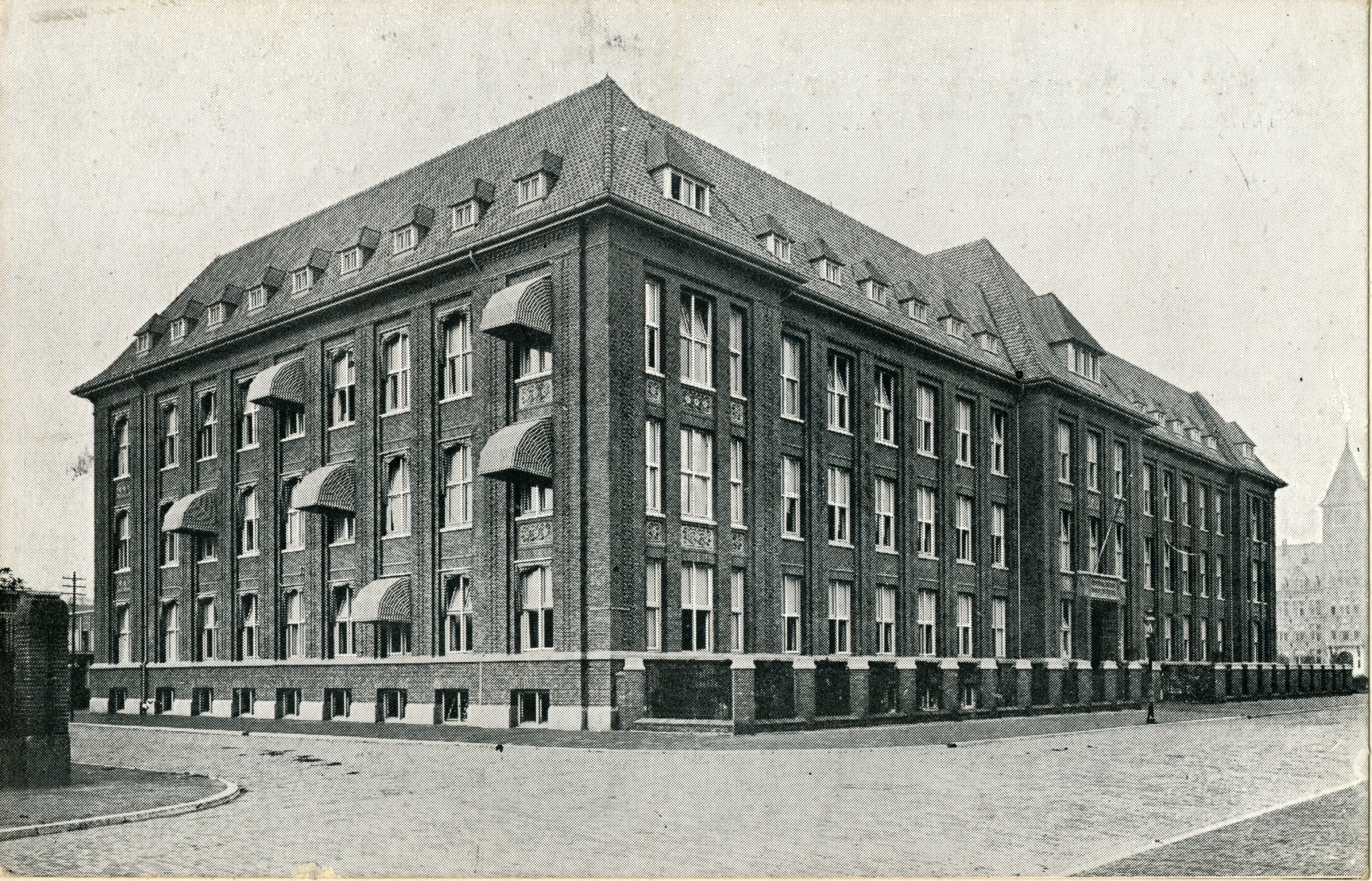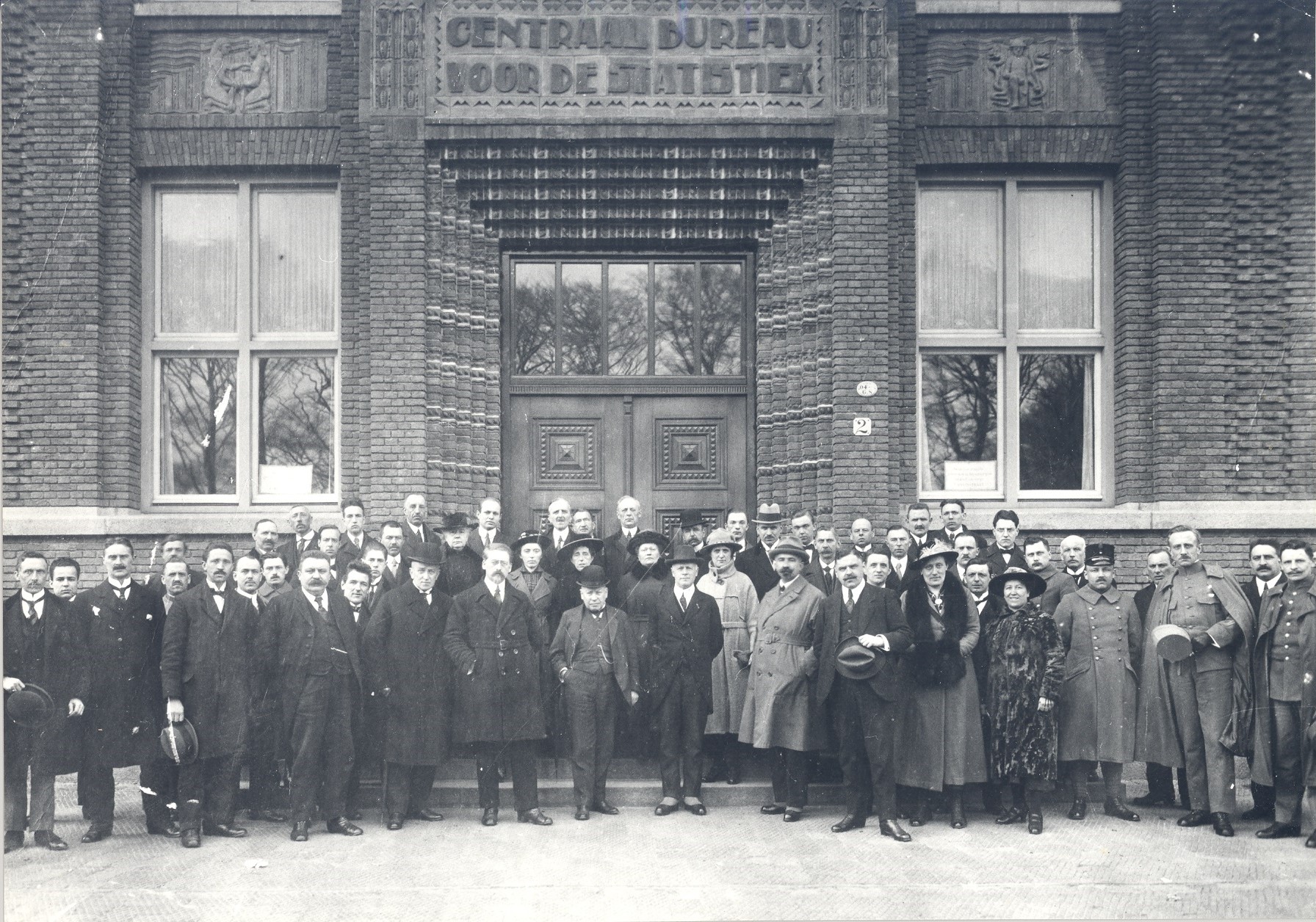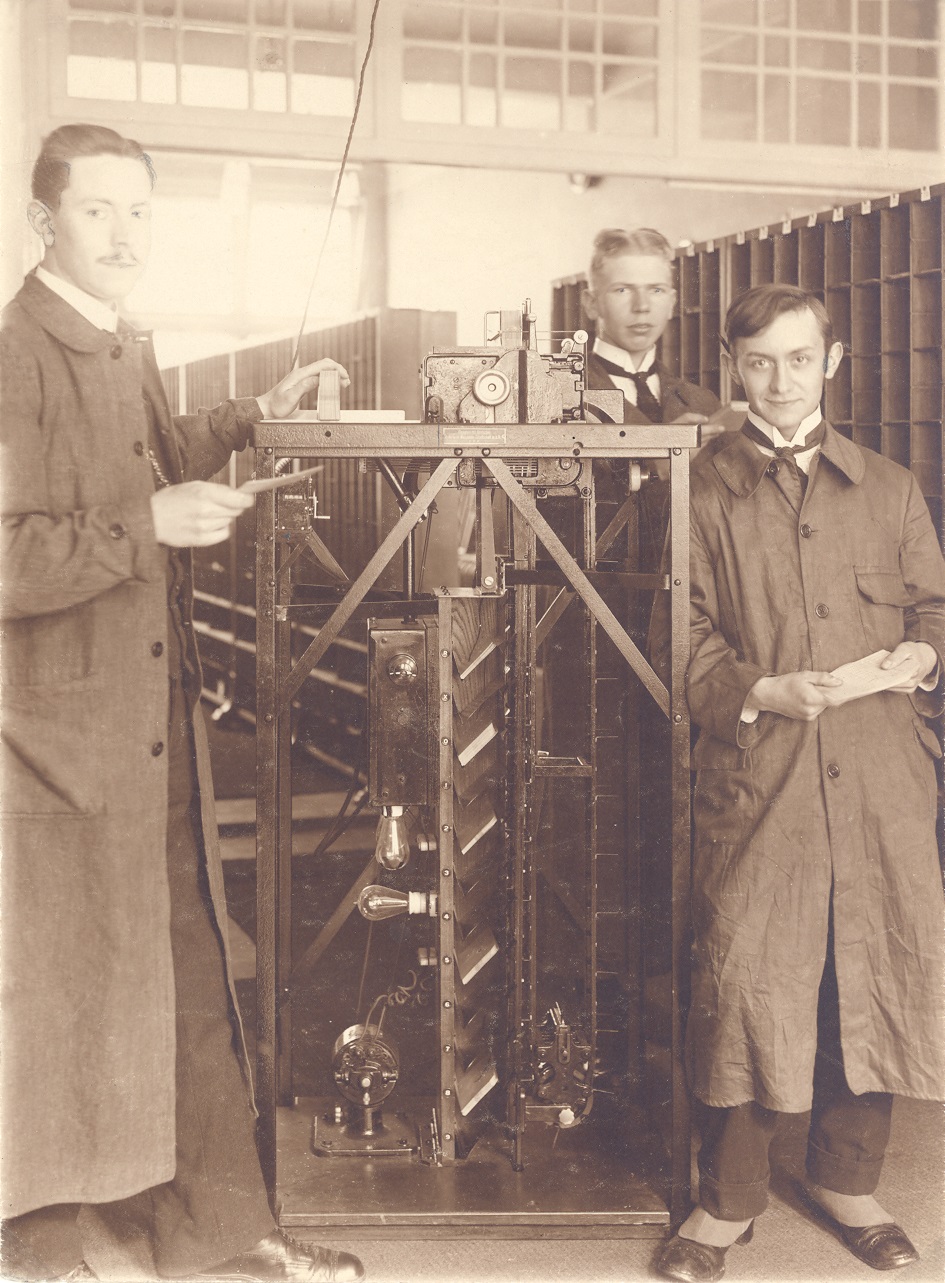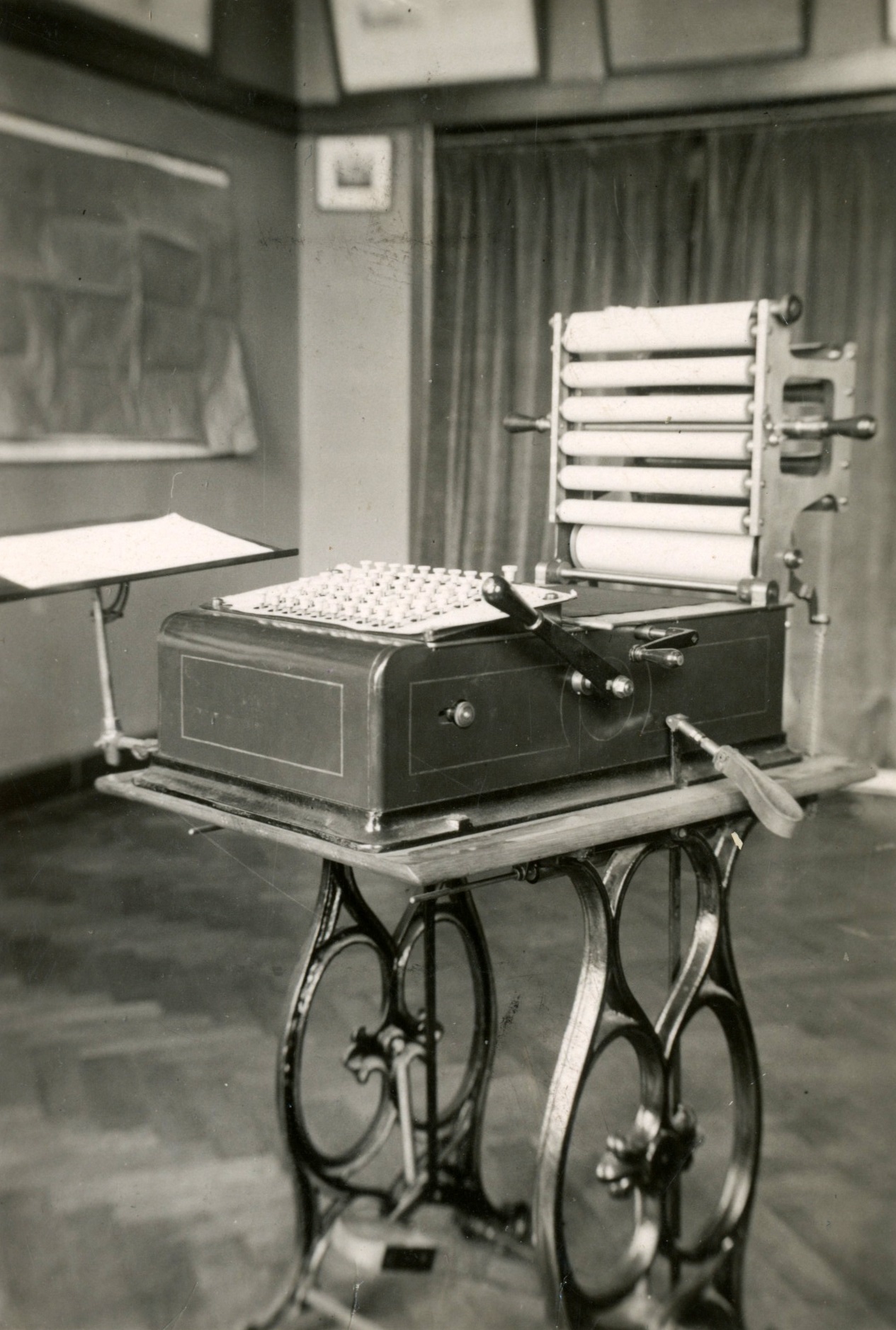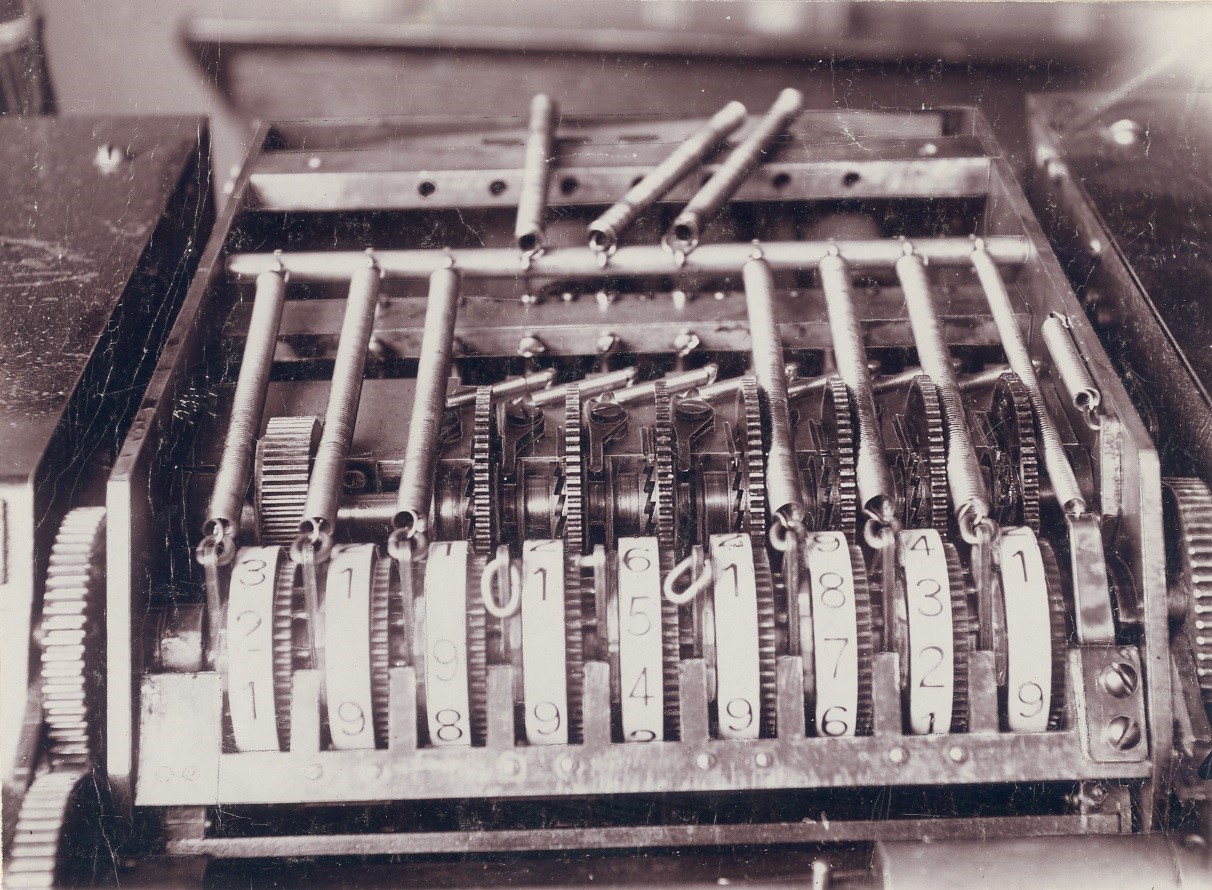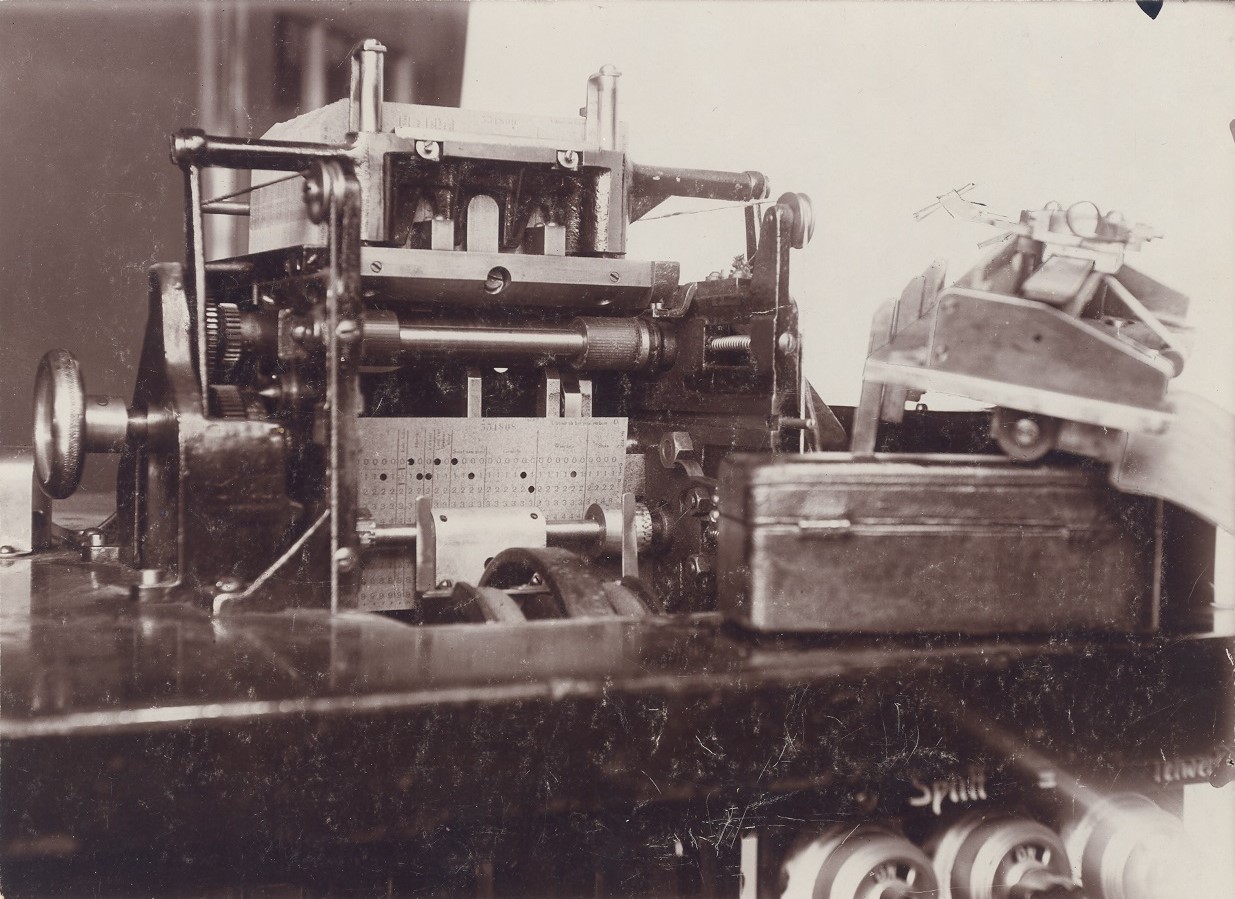1920
By 1920, Statistics Netherlands (CBS) had become a large public sector institution. For comparison, when Henri Methorst was appointed Director in 1906, the organisation had five departments and employed around 45 people. In 1920 CBS had a budget of almost 1 million guilders (around 450,000 euros) and a staff of nearly 240 employees, and those employees had moved from their offices in seven different buildings to a central location on Oostduinlaan. The size and splendour of the new premises earned it the nickname ‘the statistical palace’, and one journalist from the Noord-Hollands Dagblad newspaper described it as a ‘gigantic building, dedicated to Saint Statisticus’. Each room had its own colour scheme: green rooms for the bosses, yellow for the senior officers and brown for ordinary staff.
The first machine-processed data
The completed forms were processed by municipal clerks outside their regular office hours. This was a big job, but municipalities received total state funding of just 12 cents per person counted. As a rule, six cents – half the total budget – went to the door-to-door surveyor, and it was almost impossible for municipalities to find anyone prepared to process data for so little pay. Even when the municipality of Wassenaar promised to pay out the entire budget to the surveyors, they still couldn’t attract the necessary ten applicants, so most of the work ended up being done by temporary workers, who were less highly motivated.
In 1920, CBS machine-processed its first forms using a ‘classi-compteur’, a tabletop counting machine that housed 60 mechanical counters under 60 different keys. Each key-press increased the count by one. A lady called Madame Soissons came all the way from Paris to teach the women how to work the machines.
CBS not afraid to give opinions
When the tables were published, as well as simply stating the facts, CBS did not hesitate to give its opinions of those facts in the reports. For example, one of the published tables showed how improvements to mortality figures had raised life expectancy since 1870, more so for women than for men. However, CBS also noted that this increase had slowed since the previous census in 1909 and did not hesitate to give what it saw as the reason: ‘For the over-15s this may be linked to greater participation by women in the world of business, where they were exposed to influences that had previously been experienced by men.’
Incidentally, not all the tables were published. For example, although the number of blind and deaf-mute people had been counted since the census of 1869, those tables were only available for inspection at CBS. And housing-related forms were completed so poorly that it was not worth processing the answers.
The 1921 Provincial Report of North Holland was also the first instance where some people refused to share their details on grounds of principle. The police had to visit these 150 heads of household, many of them intellectuals, and compel them to complete their forms. A few cases resulted in official police reports.
20% non-Dutch living in Amsterdam and Rotterdam
The number of non-Dutch people (born outside the Netherlands) was 112,098, of whom 23,760 lived in South Holland and 16,018 in North Holland. Amsterdam housed 11,504 foreigners, while Rotterdam was home to 10,404, meaning that more than one in five people not born in the Netherlands (19.5%) were living in the two largest municipalities.
